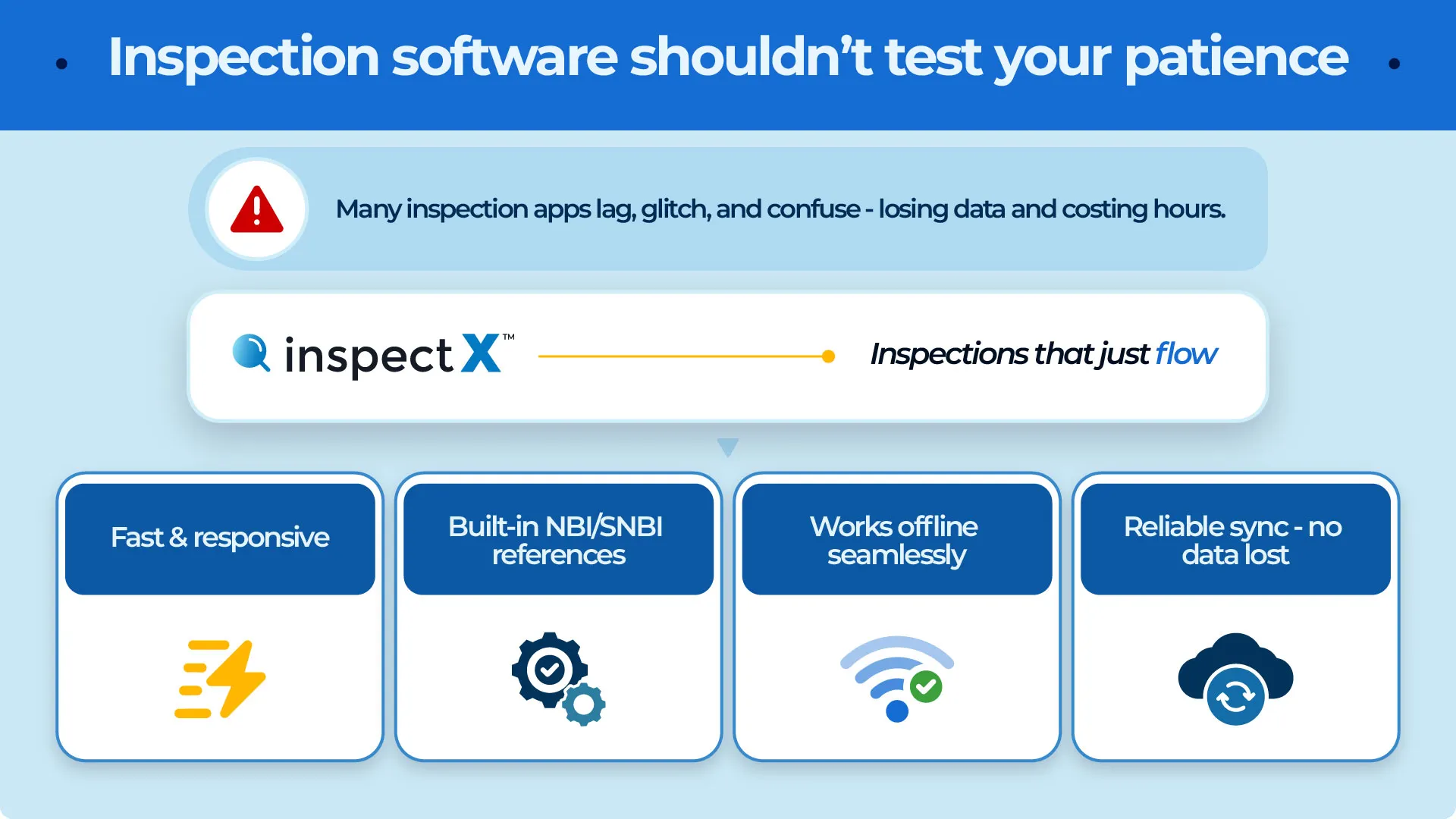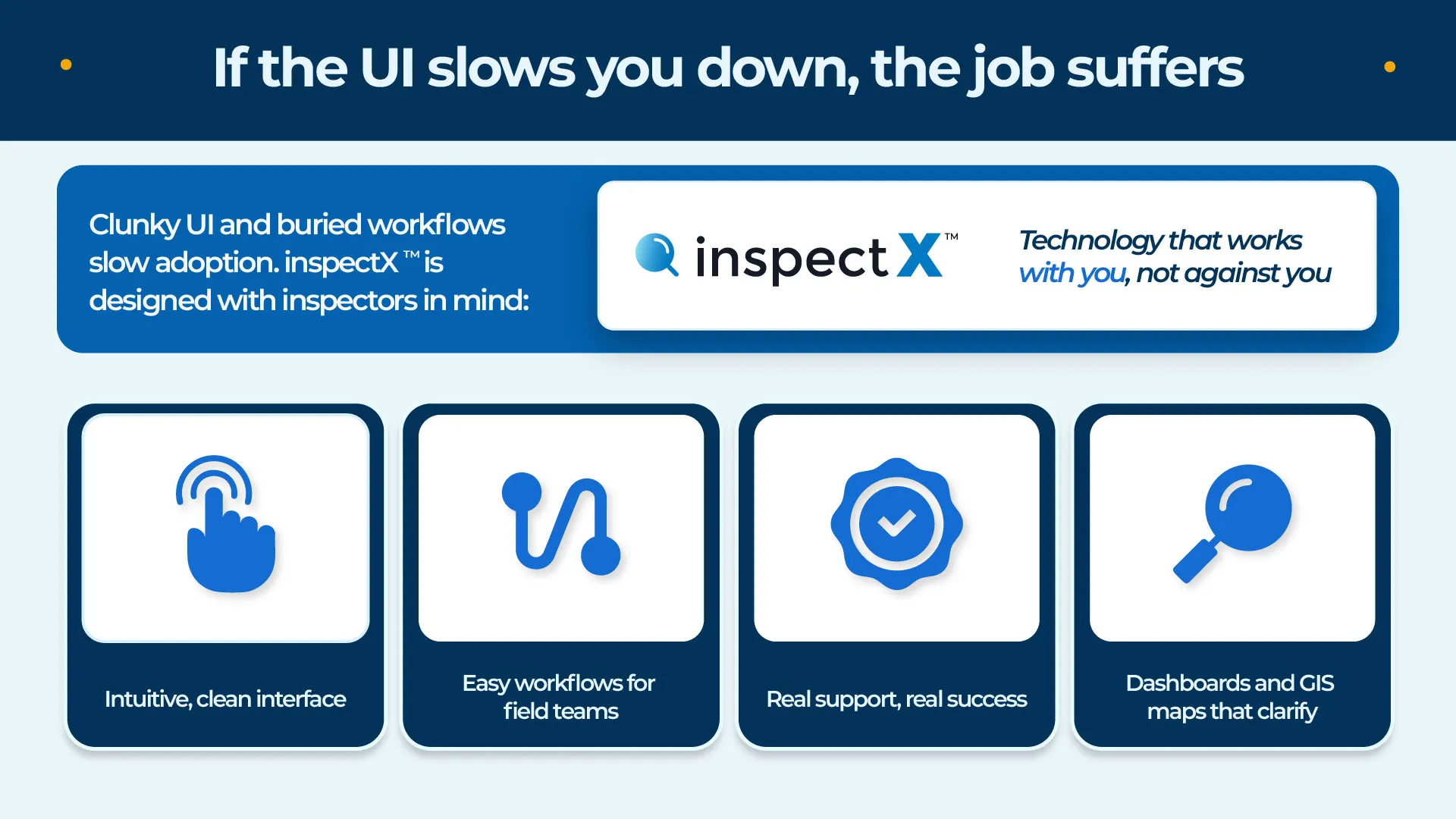
Inspection workflows rely on precision, stability, and uninterrupted data capture. When software stalls, fails to sync, or forces inspectors to repeat inputs, it disrupts more than the pace of fieldwork. It introduces inconsistencies, increases the risk of incomplete datasets, and forces teams to perform additional validation in the office. Reliable software reduces these disruptions by maintaining consistent performance, capturing data offline without conflict, and syncing intelligently to avoid overwrites or gaps. This is the foundation of a smooth field experience and trustworthy inspection records.

Interface design plays an equally technical role. A cluttered layout or poorly sequenced workflow increases cognitive load, slows decision-making, and creates opportunities for entry errors. Inspectors often work in challenging on-site conditions - harsh lighting, limited mobility, unstable footing, and time pressure. The UI must support rapid navigation, clear data fields, and structured input paths that minimize ambiguity. When the interface guides the workflow logically, inspectors maintain consistency across element ratings, defect documentation, photographs, and notes without unnecessary backtracking.

Evolving standards, such as SNBI, introduce additional technical requirements, including more data points, new condition states, expanded element-level detail, and stricter reporting logic. Software that does not adapt to these changes leaves agencies vulnerable to incomplete submissions or misaligned datasets. Modern systems must incorporate updated schemas, validation rules, and standardized export formats that meet FHWA expectations. Continuous improvement is not optional; it ensures that inspections remain compliant, comparable, and future-ready as the infrastructure environment grows more complex.

Across the industry, this shift is becoming more visible. Agencies are evaluating software not only on features but on its ability to deliver stable performance, structured data integrity, seamless offline behavior, and alignment with evolving inspection standards. Tools that stay current, reduce friction in the field, and maintain strong data hygiene strengthen the entire inspection cycle. When the technology supports the workflow instead of creating bottlenecks, inspections become more consistent, efficient, and dependable - exactly what modern infrastructure management demands.